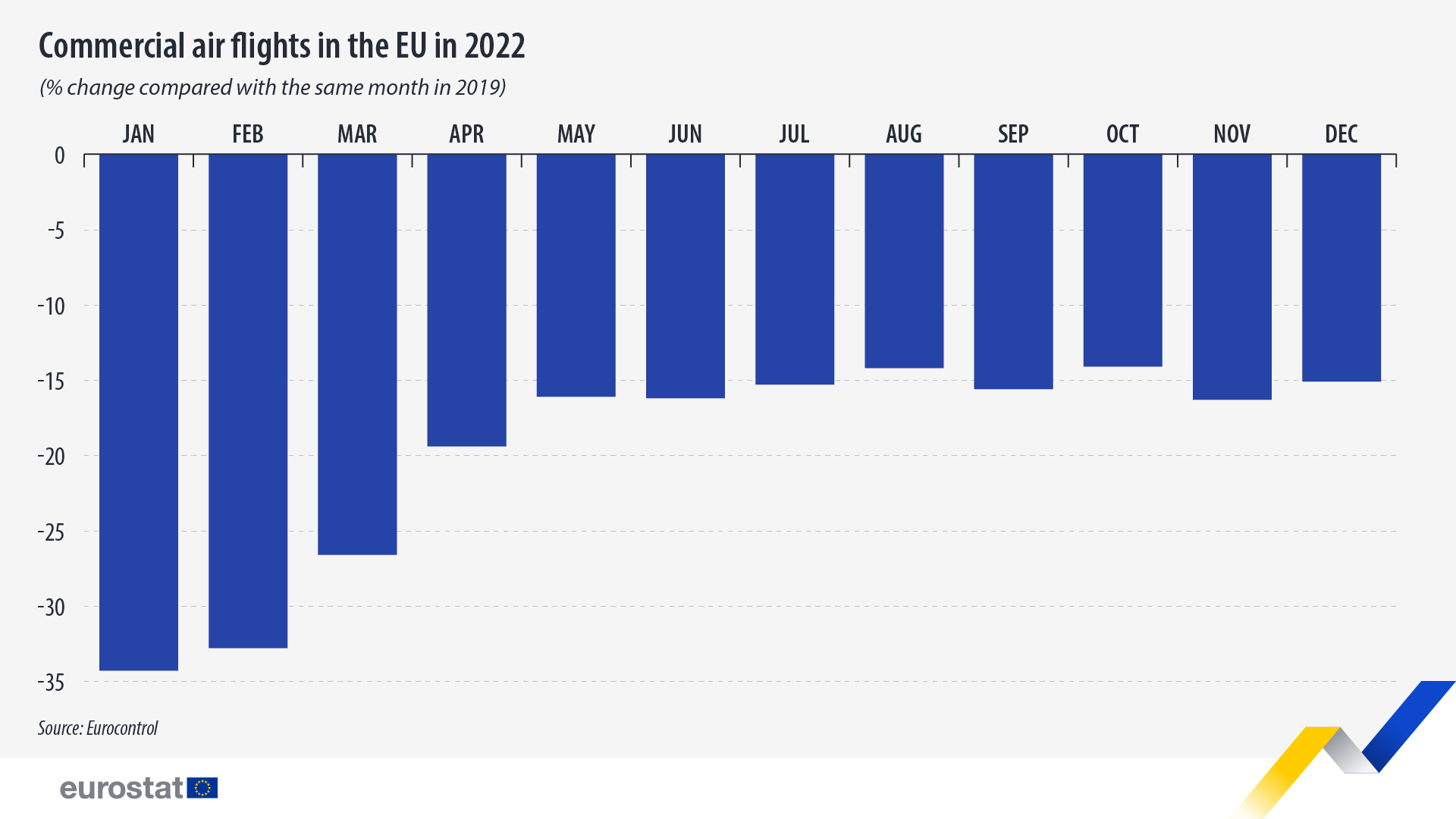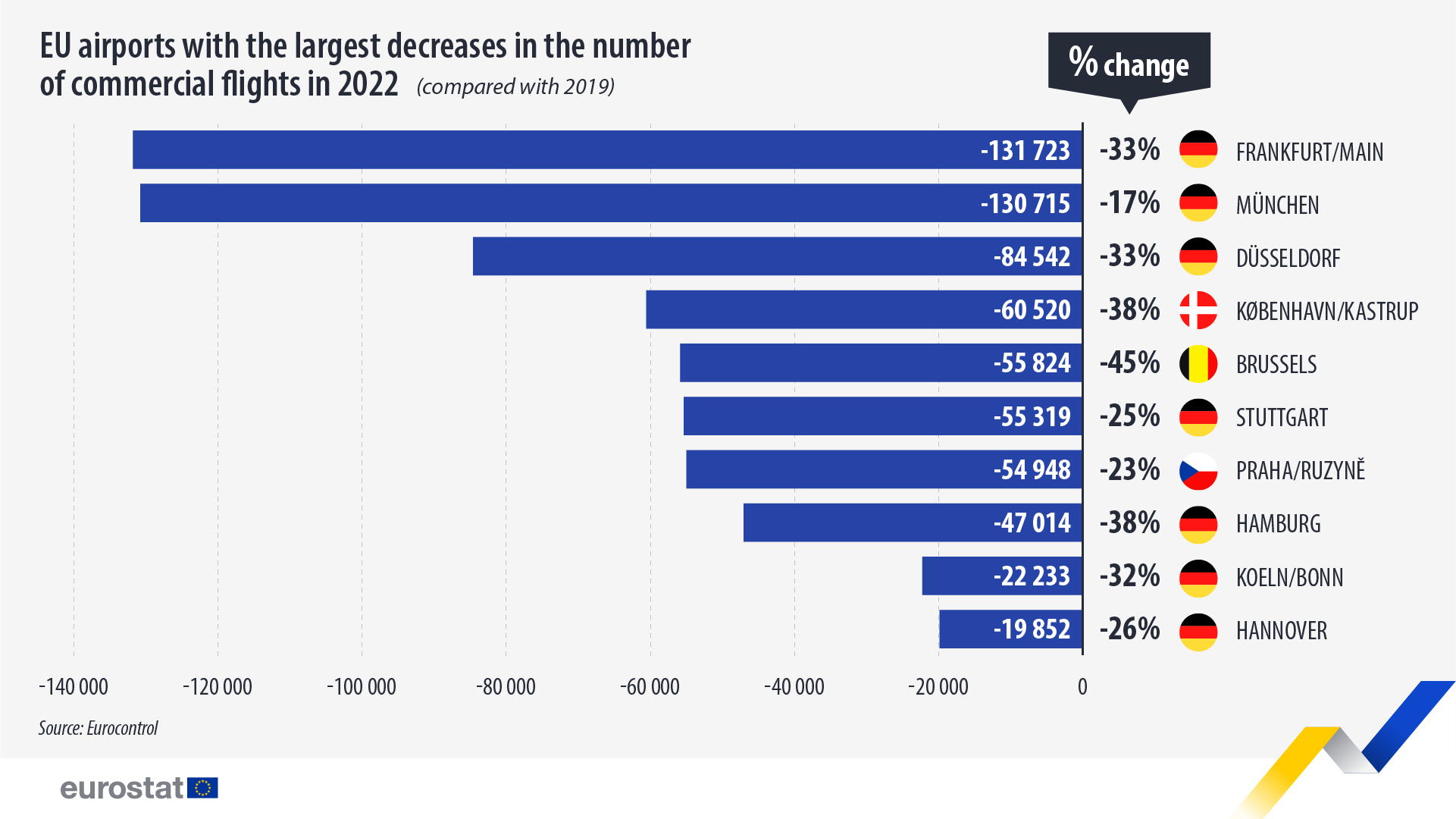Commercial flights in 2022 still below 2019 levels

In 2022, the number of commercial flights in the EU was still below the pre-pandemic number of 2019. The most substantial falls in the number of commercial flights were recorded in January (-34% compared with the same month in 2019), February (-33%), March (-27%) and April (-19%).
Source dataset: avia_tf_cm
As the year progressed, a more significant recovery was recorded, with falls between 14% and 16% recorded between May and December 2022. The most significant recoveries were recorded in August and October (both -14%).
Among the EU members, Greece was the only country that recorded more flights than in 2019 (+1%). Other countries were close to full recovery, such as Portugal (-4% compared with 2019), Luxembourg (-8%) and Croatia (-9%). At the other end of the scale, the countries that showed the least signs of recovery were Slovenia (-41%), Czechia (-35%), Finland (-33%) and Sweden (-31%).
Frankfurt/Main airport: highest drop in the number of commercial flights in 2022
In 2022, a majority of EU airports were still registering decreases in the number of commercial flights compared with 2019.
Source dataset: avia_tf_airpm
The airports that were furthest from recovery compared with 2019 were Frankfurt/Main (-131 723 commercial flights less than in 2019, -33%), München (-130 715, -17%) Düsseldorf (-84 542, -33%), København/Kastrup (-60 520, -38%) and Brussels (-55 824, -45%).
For more information
Methodological notes:
- The source of this monthly data on commercial flights is Eurocontrol, a pan-European, civil-military organisation dedicated to supporting European aviation. Data on commercial flights include scheduled and non-scheduled commercial flights (passengers, freight and mail) performed under Instrument Flight Rules (IFR). For more information, please refer to the methodological file.
- Attention to methodological differences should be paid when comparing this monthly data with Eurostat data on passenger, freight and mail air transport collected within Regulation 437/2003. For more information about Eurostat data collection, please refer to this methodological file.
If you have any queries, please visit our contact us page.


